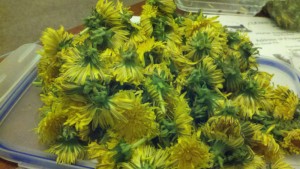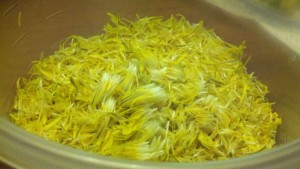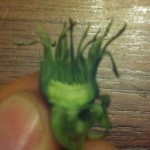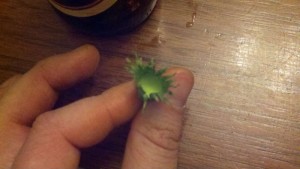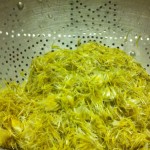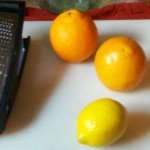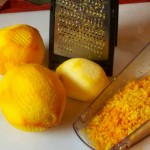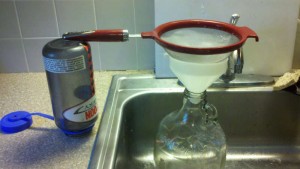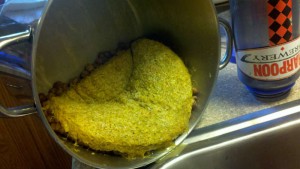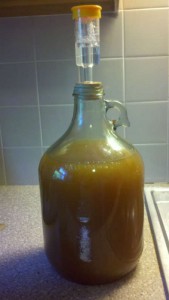Our manager Eamon Poplin recently shared his family’s traditional recipe for dandelion wine with our Facebook friends. You can read the original post here. Having an abundance of dandelions at home, I figured that I’d give it a shot.
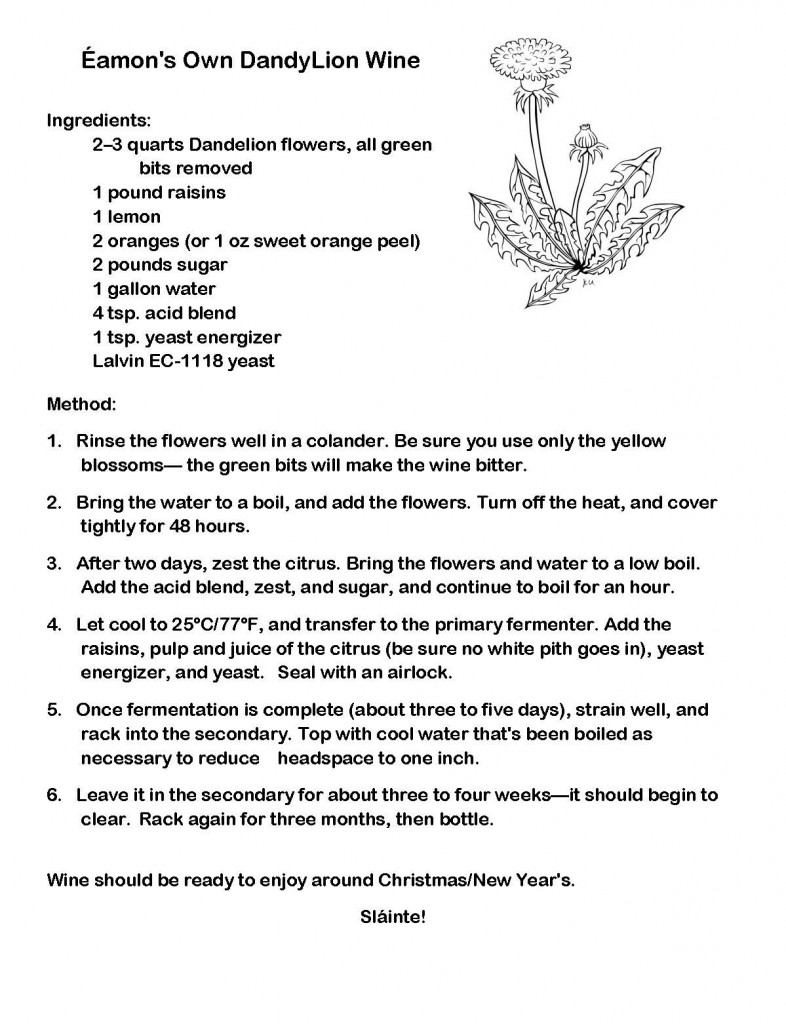 So, first thing was to pick those dandelions! It took only a few minutes to fill a half gallon tub with those golden heads. The cleaning took a bit longer. I learned a little bit about the anatomy of the flower. It’s quite convenient that the flowery tufts break off neatly above a denser layer.
So, first thing was to pick those dandelions! It took only a few minutes to fill a half gallon tub with those golden heads. The cleaning took a bit longer. I learned a little bit about the anatomy of the flower. It’s quite convenient that the flowery tufts break off neatly above a denser layer.
Those eight cups of flowers easily took three hours of labor over two days. I stored them in the fridge between picking sessions. Letting them stew was easy. I just left them in a pot on the stove starting on the evening of 29 May 2014.
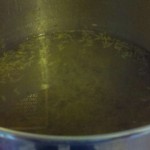 On the actual day of making the wine (1 June 2014), I started by zesting the citrus.
On the actual day of making the wine (1 June 2014), I started by zesting the citrus.
I then juiced them using a hand juicing device I have. The only waste was the solid white pith! Adding the ingredients and boiling was pretty standard.
I let it cool overnight and then pitched the yeast right into the pot. The wine is currently fermenting and I expect to strain it into secondary this weekend.
The aroma from all of the citrus and added acidity was quite pungent. The dandelion flowers mostly smelled musty and heavy, like the flowers themselves after a rain. It’ll be interesting to see how much of it actually carries through!
I did deviate from Eamon’s recipe. I didn’t have acid blend on hand so I used 2 teaspoons of citric acid instead. The recipe seemed very high acid so I figured that I could always do an adjustment just before bottling. I also used Superfood yeast nutrient instead of yeast energizer (again, it’s what I had on hand). Finally, I substituted Lalvin K1V-1116 wine yeast for the champagne yeast.
It was Saturday, 7 June before I returned to the batch. I hadn’t seen any activity due to the lack of an airlock, but I could smell that fermentation activity was pushing aromatic compounds out from under the lid. For the straining, I decided not to worry about oxidation (there’s additional fermentation to be done anyway) and strain it into the jug using a funnel. Here’s that setup:
The dandelion flower formed an interesting mat above the wine. The acidity of the mix also stripped some of the color out of the raisins.
The total volume in the fermenting jug was a little less than a gallon, so I topped up with some cool tap water. Here’s where the wine will sit for the next few months! Feel free to stop by take a look for yourself.
Check back later for an update on the flavor of the wine.

